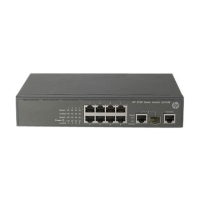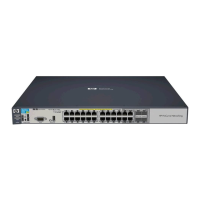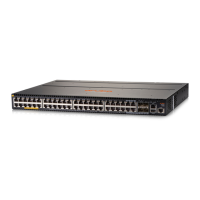176
Verifying the configuration
# After user Host logs in through Switch A, display the user authentication information by using the
display portal user command on Switch A and Switch B.
[SwitchA] display portal user all
Index:3
State:ONLINE
SubState:NONE
ACL:NONE
Work-mode: primary
VPN instance:NONE
MAC IP Vlan Interface
---------------------------------------------------------------------
000d-88f8-0eac 9.9.1.2 10 Vlan-interface10
Total 1 user(s) matched, 1 listed.
[SwitchB] display portal user all
Index:2
State:ONLINE
SubState:NONE
ACL:NONE
Work-mode: secondary
VPN instance:NONE
MAC IP Vlan Interface
---------------------------------------------------------------------
000d-88f8-0eac 9.9.1.2 10 Vlan-interface10
Total 1 user(s) matched, 1 listed.
The output shows that the information of user Host is saved on both Switch A and Switch B. The user's
working mode on Switch A is primary, and that on Switch B is secondary, which indicate that the user
logged in through Switch A and the user information on Switch B was synchronized from Switch A.
Configuring portal server detection and portal user information
synchronization
Network requirements
As shown in Figure 62, a host is directly connected to a switch (the access device) and must pass portal
authentication before it can access the Internet. A RADIUS server serves as the
authentication/accounting server.
Detailed requirements are as follows:
• The host is assigned with a public network IP address either manually or through DHCP. Before
passing portal authentication, the host can access only the portal server. After passing portal
authentication, the host can access the Internet.
• The access device (Switch) can detect whether the portal server is reachable and send trap
messages upon state changes. When the portal server is unreachable due to a connection failure,
network device failure, or portal server failure, for example, the access device can disable portal
authentication, allowing users to access the Internet without authentication.
• The access device can synchronize portal user information with the portal server periodically.
